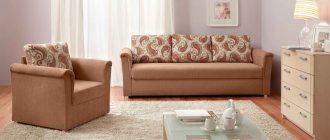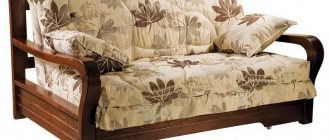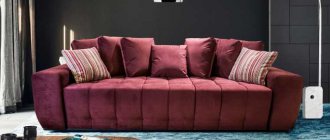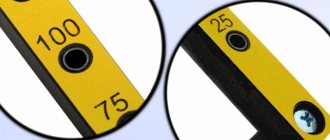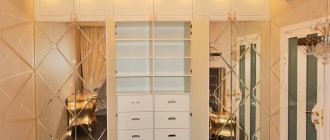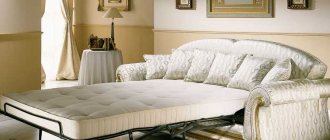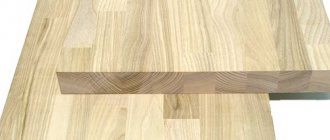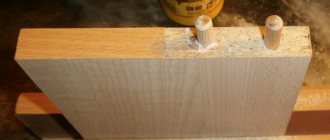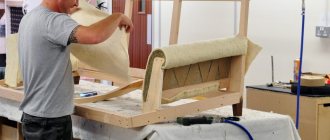28793
Thanks to the successful selection of a wardrobe or wardrobe system for the bedroom, living room, children's room and even the corridor, you can significantly save living space. This becomes especially important in a small apartment, the area of which is quite small. High functionality and practicality of such furniture cannot be ensured without thoughtful internal content, and pantographs for sliding wardrobes are one of the important elements.
Purpose and principle of operation
Pantographs for sliding wardrobes are a U-shaped structure made of durable metal. It is necessary as part of a sliding wardrobe to improve its performance characteristics. Thanks to the presence of a pantograph, using the cabinet becomes much more convenient. You can deliver clothes to the upper compartment of the structure autonomously and without any particular difficulties. In addition, such a product allows you to rationally zone the building according to the current season.
Manufacturers use high-strength metals in the manufacturing process of pantographs, which allows the product to withstand significant loads during operation. Therefore, even if you have quite heavy outerwear, you should not worry about the quality of the furniture; the pantograph will not break.
If we consider the structure of this cabinet element, we can note its main elements:
- sliding rod;
- control handle;
- side arms;
- boxes with slots for levers to fix the element in a certain position.
The mechanism works as follows: you can lower the bar with things by using the handle. When you press it, the moving levers will bend the plates, and they will forcefully push the structure up.
Operating principle
Types of pantographs
There are many models of clothing lifts. They differ both in the material of manufacture and in the principle of operation. Two categories should be distinguished:
- mechanical pantographs;
- furniture pantographs with electric drive.
The second category of clothing elevators is more convenient to use, but has a higher price. The cost of a high-quality model starts from 6,000 rubles, and installation of a pantograph with an electric drive is not as simple as a mechanical one. However, in spite of everything, there is a certain category of consumers who are willing to give any money for a higher level of comfort - a matter of taste and income level.
However, since the overwhelming majority still prefer, for a number of reasons, the use of pure mechanics, it is worth paying special attention to the description and method of installation of this particular modification of clothing elevators.
Varieties
If the bedroom or children's room is not impressive in size, and the person's wardrobe is quite large, you need to think about a way to comfortably accommodate it. You can choose a small but tall wardrobe, and place clothes and accessories inside it in two tiers. And access to the second tiers is provided using a pantograph.
Today, the domestic furniture market offers sliding wardrobes with different types of pantographs inside the structure. These products differ from each other in the material of manufacture and the mechanism of functioning. We will describe the most popular categories below.
Mechanical
When choosing a sliding wardrobe for your home, it is important to think about the type of pantograph that is relevant to equip such furniture with. Such a mechanism will provide a person with access to the highest corners of the cabinet, rationally planning its internal contents. In addition, a mechanical pantograph allows you to give the clothes inside the structure a neat look and prevent them from getting wrinkled. Blouses and jackets, trousers and dresses will be aesthetically placed on hangers.
If the family budget is limited, a mechanical pantograph is quite suitable for these purposes. This is a type of pantograph in which the lifting mechanism is equipped with springs that easily return the levers to their current position.
The main operational parameters of such mechanical products are presented below.
| Characteristic | Meaning |
| Load capacity | 10-20 kg |
| Allowable boom width | 450-1250 mm |
| average cost | From 2 thousand rubles |
Electrically driven
Electrically driven clothing elevators are more convenient to use, since no effort is required to access clothes on hangers. All you have to do is press a button, which starts the motor in the wardrobe design. The crossbar with hangers is lowered, and a person can get the current outfit without additional difficulties. When there is no need to access things, pressing the button will return the pantograph to its original position. Such a mechanism is especially relevant in a children’s room, because it will be much easier for a child to use it than a mechanical version.
A more comfortable pantograph costs a lot of money, so models with an electric drive are less common than mechanical options. The average cost of a quality product starts from 7 thousand rubles. In addition, such a system must only be installed by an experienced specialist, otherwise you can make a mistake and break the mechanism.
Types of pantographs
Pantographs can be mechanical or electrical.
All models are divided by material of manufacture:
- steel;
- aluminum.
By rod width:
- 450 - 600 mm;
- 600 - 800 mm;
- 800 - 1150 mm;
- other parameters;
Pantographs are also designed for different load capacities. The kit comes with instructions and mounting hardware.
Mechanical
These are easy to install and operate devices. Lifting mechanisms are gas, hydraulic and spring.
| Mechanical models | ||||
| Manufacturer, model | SERVETTO ONLY | AMBOS 700 | VIBO Ambrogio | LEMAX |
| Lifting mechanism | hydraulic | hydraulic | hydraulic | hydraulic |
| Section width | 600-1200 mm | 750-1150 mm | 500-750 mm | 600-830 mm |
| Rod type | telescopic | telescopic | telescopic | sliding |
| Load capacity | 12 kg | 15 kg | 14 kg | 12 kg |
| Material | steel, plastic | chrome steel, plastic | steel, plastic | metal, plastic |
| Color | grey, brown | white | grey | silver |
| average price | 9100 rub. | 6200 rub. | 7050 rub. | 3250 rub. |
Electrical
They are controlled by a button connected by a wire to the system unit or remote control. Much more convenient to use, but require complex installation by a qualified electrician. Electrically driven pantographs are generally made to order.
Characteristics of the SERVETTO ELECTRICAL model (made to order).
To order an electric pantograph, you need to contact manufacturers' representatives. This can be done through the official websites.
Pantographs are indispensable for all tall cabinets and dressing rooms - they help to properly distribute space and maintain order. As for the main drawback - wear and tear - this can be prevented. To do this, purchase models from trusted manufacturers and adequately evaluate price and quality. Durable materials, good workmanship and reliable mechanisms cannot be very cheap.
Pantograph is a U-shaped metal structure designed to improve the performance characteristics of a sliding wardrobe. It provides autonomous delivery of clothes to the upper compartments of furniture. In addition, with its help, the zoning of the building is carried out according to the “winter-summer” principle.
Such placement of things allows you to quickly and without any effort swap your wardrobe when the seasons change. Thus, in the closet, the things you need to wear will hang in the most convenient place, and all other suits - trousers, dresses, jackets, etc., which you are not currently using, will find a temporary home in the upper compartment.
Of course, for such distribution you can use conventional stationary rods, but in such a case the performance characteristics of the furniture are reduced. In addition, with the limited dimensions of the internal space of the wardrobe, there is nothing else left to do but to allocate space for the things described only in the upper zone. Then you can’t do without installing one or two pantographs. In general, this furniture mechanism is quite a useful thing that can bring even more comfort to your life.
An undoubted advantage of pantographs is also their ability to deliver clothes from the depths of the closet to beyond. When lowered, the bar with things hung on it is almost at eye level, which allows you to easily select and take the desired item of clothing. In addition, you will not need to install lighting in the department where such a clothes lift is installed, and this is an additional cost savings. Moreover, sometimes it is not much less than the cost of the pantograph itself.
Material of manufacture
Pantographs for sliding wardrobes of different sizes must certainly be durable and resistant to loads, because the wardrobe itself is purchased for more than one year, so all its internal contents must have high performance parameters.
Often, durable metals are used to manufacture modern models of pantographs: chrome, aluminum and others. This ensures the product is able to withstand significant loads, not break, and serve for as long as possible. The weight that a metal pantograph can withstand ranges from 10-20 kg. If clothes on hangers weigh more than 20 kg, then the product will simply become unusable. Therefore, when planning the space inside the wardrobe, it is important to take this fact into account.
Rules for placement and operation
If the sliding wardrobe is selected in a furniture store or made to order, most likely the installation of the pantograph will be done by a craftsman. However, if you want to improve the functionality of an old home cabinet, you can install this mechanism yourself.
First, you will have to study the location of the shelves inside the wardrobe. If there are no niches for placing clothes on hangers, remove several shelves. If there is a niche, stock up on the latest tools:
- measuring tape, simple pencil;
- screwdriver;
- magnetic holder, bits for hardware;
- drill 3 mm;
- hex wrench.
Once the list of tools has been prepared, begin installing the mechanism. To determine the current location of the crossbar, consider what clothes will hang on it. If dresses, coats, the crossbar are mounted at a level of 1-1.2 m from the bottom shelf. If only jackets and blouses are at the level of 0.8 m.
It is extremely important to determine the lower level of the product, for which you will need to measure its height (from the bottom of the box with the lifting mechanism) and add another 30 mm to this value.
In order for the installation to be more reliable, of high quality, and for the structure to withstand maximum weight, it is important to drill the racks for self-tapping screws. When fixing mounting strips and levers to the side wall of the cabinet and installing a rod with a handle, it is important to accurately match the holes in the strips with the previously prepared blind holes in the partitions. It is important not to confuse the right-hand and left-hand levers, and also not to overdo it with pressure when screwing in the screws. Otherwise, the work will have to be repeated from the beginning.
As for the operating rules, they are simple. It is important not to overload the structure, specifying the maximum permissible weight of clothing in the instructions.
How to install a pantograph in a wardrobe
To install a pantograph yourself, you must have the following tools:
- Roulette.
- Pencil.
- Screwdriver.
- Magnetic holders.
- Bits for hardware.
- Drill size 3 mm.
- Hex key.
Next, you need to decide what clothes will be placed on the pantograph. If dresses and coats, then the height should be no less; if jackets, then
To correctly place the pantograph in the closet, you must first measure the height of the closet. After this, you can begin installation by measuring the pantograph and deciding on the location for installing the brackets, for which you need to make holes with a 3mm drill.
The pantograph lever should fit easily into the bracket and not rest against the ceiling, therefore, when installing the bracket, it is important to measure the height correctly. It is necessary to add at least 10 mm to the overall height of the pantograph so that the lever can fit into the bracket and latch into place.
It is more convenient to install the pantograph in disassembled form. After securing the brackets, insert the levers. We insert a telescopic rod into the levers. It is easy to select the required size of the rod, since it is extendable and can be secured from To the levers, the rod is secured with M8 screws for a hex key.
The final stage is to secure the handle, which is also secured with screws. To prevent the handle from moving left and right, there are special rubber bands that fix the handle in one place.
It is worth noting that when installing the pantograph, it is necessary to ensure that nothing interferes with its extension. Therefore, they should be installed only in perfectly symmetrical wardrobes.
Source: kuppe.ru
How to choose
When choosing a pantograph for a wardrobe, it is important to be guided by the following criteria:
- price and management principle. Mechanical models are slightly cheaper than electric ones. And excessively cheap products should scare away the buyer in both cases. Most likely, a cheap product will very quickly lose functionality;
- quality - the selected product must certainly be made of high-quality materials, otherwise it will last a short time. Ask the seller if there is a quality certificate. Products without such a document included are not worth the attention of buyers;
- dimensions - carefully measure your wardrobe using a construction tape. This will allow you to determine the current dimensions of the pantograph.
If you have minimal experience in such matters, you can seek help from an experienced specialist. He can also install the product.
